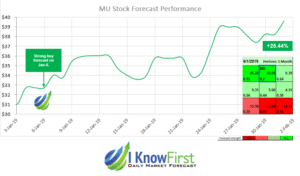NOKIA forecast based on algorithms: chart of last 4 months predictions
I Know First has successfully predicted the price of Nokia throughout the past 4 months and has a strong track record tracing back even further, by analyzing fundamental variables such as volatility, volume, and short-term trends. The Chart shows the algorithm’s predictions for the past 4 months.
NOK stock forecast from May 13th 2013 till September 9th 2013.
The forecast is based on 90 day predictions of “I Know First” predictive algorithm
Even though Nokia’s global smartphone market share has fallen from more than 50% from 2007 to less than 5% in 2013, Nokia has always successfully stopped its negative momentum and restructured its operations to accommodate a smaller, leaner company demonstrating that it is both a resistant and innovative company. I Know First’s algorithm recognized that Nokia was undervalued and merited a higher estimation. It has accurately recognized the potential in Nokia, recommending a constant long signal over the last 4 months despite the high volatility in it mobile phone segment.
I Know First’s algorithm anticipated the potential of Nokia to successfully transition itself into a major player in the TEM industry.
I Know First: Daily Market Forecast provides accurate and paramount investment foresight based on advanced self-learning algorithms to build superlative investment strategies. Our market forecasting system predicts more than 300 markets: stocks, world indices, currencies and commodities. Enhance your portfolio by visiting us at www.iknowfirst.com or www.gold-prediction.com and www.currency-prediciton.com
How to read this chart?
Each point on the chart was taken from the actual daily forecast published the morning before the next market open. The chart shows the actual price in thick blue. The positive or negative (Up or Down) signals of the forecast were added to the actual last known price at the time of forecast to result in signal lines. Thus, when the signal line is above the actual line, it means “buy,” if below, it means “sell”. The green and red arrows show what would be the best times to enter the market. The widely ranging signals are scaled relative to the previous average signal range to bring them into manageable scale to fit them all in one chart.













